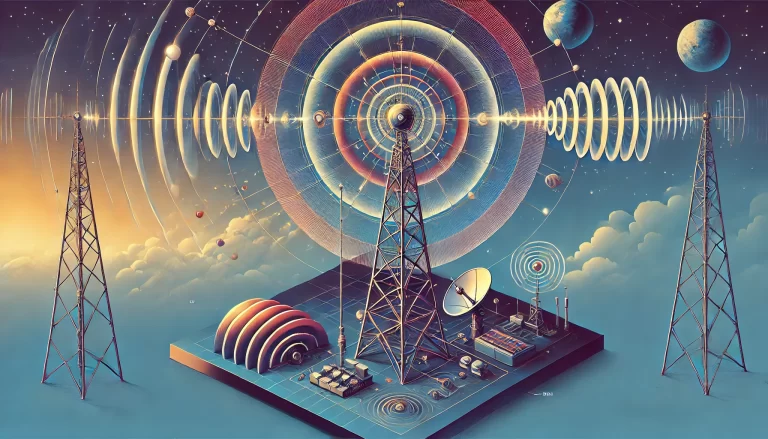How a Quartz Watch Works: The Science of Timekeeping
The humble quartz watch is a marvel of precision engineering and scientific innovation. It quietly and reliably keeps time on our wrists, all thanks to the fascinating properties of a tiny piece of quartz crystal and some clever electronics. But how does it work? What makes a quartz watch so accurate, and what’s the science behind it?
In this blog post, we’ll take a deep dive into the history, science, and engineering principles that power quartz watches, explaining concepts like the quartz crystal, 32768 Hz resonance, and the flip-flop circuit that brings it all together. We’ll also explore its comparison to a tuning fork to provide a relatable perspective on how quartz vibrates.
A Brief History of Quartz Watches
The history of timekeeping is marked by humanity’s quest for accuracy, from sundials and water clocks to mechanical clocks and modern electronic timepieces. Quartz watches are a relatively recent innovation, and their development revolutionized the watch industry.
The Quartz Revolution
The first quartz clock was developed in 1927 by Warren Marrison and J.W. Horton at Bell Telephone Laboratories. These early quartz timekeepers were large, laboratory-grade devices, not suitable for everyday wear. It wasn’t until 1969 that the Seiko Astron, the first commercially available quartz wristwatch, was released. This marked the dawn of the Quartz Revolution, when quartz watches began to dominate the market due to their unmatched accuracy, low cost, and reliability.
Why Quartz?
Quartz replaced mechanical escapements (the ticking heart of traditional watches) because of its unique ability to vibrate at a stable and consistent frequency when electrically stimulated. This discovery laid the foundation for modern electronic timekeeping.
The Science of Quartz: Why It’s Perfect for Timekeeping
At the heart of every quartz watch lies a small piece of quartz crystal. But what makes quartz so special? The answer lies in its piezoelectric properties.
What Is Quartz?
Quartz is a naturally occurring mineral composed of silicon and oxygen (SiO2SiO_2). It forms in a crystalline structure, which makes it ideal for its unique mechanical and electrical properties.
The Piezoelectric Effect
Quartz exhibits the piezoelectric effect, meaning it generates an electric charge when subjected to mechanical stress and vice versa. In a quartz watch:
- When an electric current passes through the quartz, it vibrates at a precise frequency.
- These vibrations generate a small but consistent electrical signal, which is used to keep time.

Quartz and Resonance: 32768 Beats Per Second
Resonance and Vibrations
When a quartz crystal is cut and shaped into a specific form (usually a tuning fork shape), it naturally vibrates at a precise frequency. This is similar to how a tuning fork produces a specific pitch when struck. For example:
- A standard tuning fork for musical purposes resonates at 440 Hz, producing the note A.
- A quartz crystal in a watch vibrates at 32768 Hz – much higher and outside the range of human hearing.
Why 32768 Hz?
This specific frequency is chosen for a few key reasons:
- Binary Simplicity: 32768 is a power of two 2^15, making it easy for digital circuits to divide the signal into smaller, manageable units. By halving this frequency 15 times, the circuit reduces it to exactly 1 Hz – one pulse per second.
- Stability: Quartz vibrates more consistently at higher frequencies, ensuring long-term accuracy.
- Energy Efficiency: The 32768 Hz frequency strikes a balance between high accuracy and low power consumption, perfect for battery-operated watches.
From Vibrations to Seconds: The Role of Flip-Flop Circuits
To convert the high-frequency oscillations of the quartz crystal into something useful (like ticking seconds), a watch relies on digital electronics. This is where flip-flop circuits come into play.
What Is a Flip-Flop Circuit?
A flip-flop is a type of electronic circuit that functions as a digital switch or memory element. In a quartz watch, flip-flops are used to divide the high-frequency signal from the quartz crystal into lower frequencies.
How It Works
- The quartz crystal produces a steady signal at 32768 Hz.
- A series of binary counters (implemented using flip-flops) divide the frequency in half repeatedly.
- After 15 stages of division, the original 32768 Hz signal is reduced to 1 Hz.
- The 1 Hz signal is used to drive the stepper motor or LCD, producing the familiar ticking motion or digital display.
This elegant combination of analog vibrations and digital processing is what makes quartz watches so precise and efficient.
Quartz vs. A Tuning Fork: A Helpful Analogy
To better understand how quartz vibrates, let’s compare it to a tuning fork, an acoustic tool widely used in music and physics.
Tuning Forks: Vibrating at a Natural Frequency
A tuning fork is designed to resonate at a specific frequency when struck. For example:
- A tuning fork for the musical note A vibrates at 440 Hz.
- Its vibrations are highly stable due to its rigid structure, much like quartz.
Quartz as a Microscopic Tuning Fork
Quartz crystals used in watches are often cut into a tuning fork shape because:
- This shape enhances the crystal’s ability to vibrate predictably.
- The crystal resonates at its natural frequency (32768 Hz) when stimulated electrically, just like a tuning fork resonates when struck.
While tuning forks produce audible sound waves, quartz vibrates at ultrasonic frequencies, generating electrical signals instead.
The Inner Workings of a Quartz Watch
Now that we’ve covered the quartz crystal and the flip-flop circuit, let’s look at how these components work together in a quartz watch.
1. Oscillator Circuit
The watch’s battery supplies power to an oscillator circuit, which stimulates the quartz crystal to vibrate at its natural frequency.
2. Frequency Divider
The oscillations are fed into a frequency divider, a series of flip-flops that reduce the 32768 Hz signal to 1 Hz.
3. Timekeeping Circuit
The 1 Hz signal drives the timekeeping mechanism:
- In analog quartz watches, it powers a stepper motor, moving the hands of the watch.
- In digital quartz watches, it updates the LCD display.
4. Power Management
Quartz watches are designed to be highly energy-efficient, with a single battery often lasting several years.
Why Are Quartz Watches So Accurate?
Quartz watches are renowned for their precision, with typical deviations of just a few seconds per month. This accuracy is due to:
- Quartz Stability: Quartz crystals are highly resistant to environmental factors like temperature changes.
- High Frequency: The 32768 Hz frequency ensures minimal drift over time.
- Robust Design: Quartz watches have fewer moving parts than mechanical watches, reducing wear and tear.
Comparing Quartz to Mechanical Watches
Advantages of Quartz Watches
- Accuracy: Far superior to mechanical watches.
- Low Maintenance: No winding or regular servicing required.
- Cost-Effectiveness: Cheaper to produce and purchase.
Advantages of Mechanical Watches
- Aesthetic Appeal: Often considered more elegant and traditional.
- Craftsmanship: Represents centuries of watchmaking artistry.
- Longevity: Properly maintained mechanical watches can last generations.
Conclusion: The Timeless Appeal of Quartz Watches
The quartz watch is a perfect example of science meeting everyday practicality. By harnessing the piezoelectric properties of quartz, the precision of 32768 Hz vibrations, and the simplicity of flip-flop circuits, these timepieces deliver unparalleled accuracy and reliability.
Next time you glance at your watch, take a moment to appreciate the brilliant engineering and scientific principles that make it tick – literally. From the quartz crystal to the digital circuitry, every element works in harmony to keep you on time.







